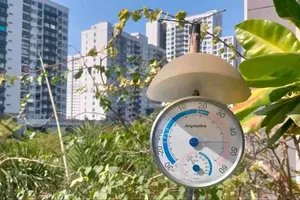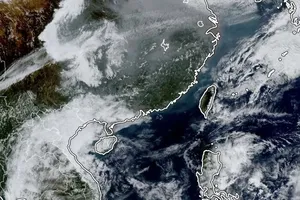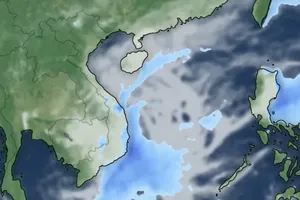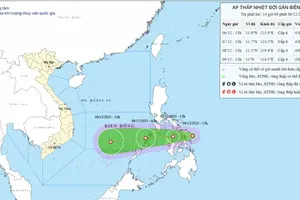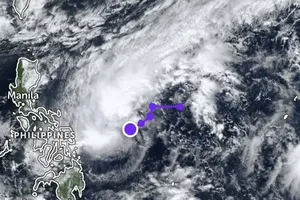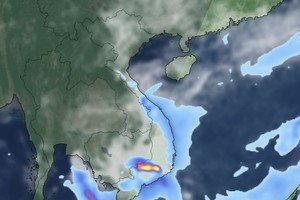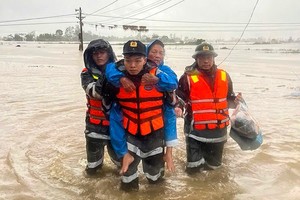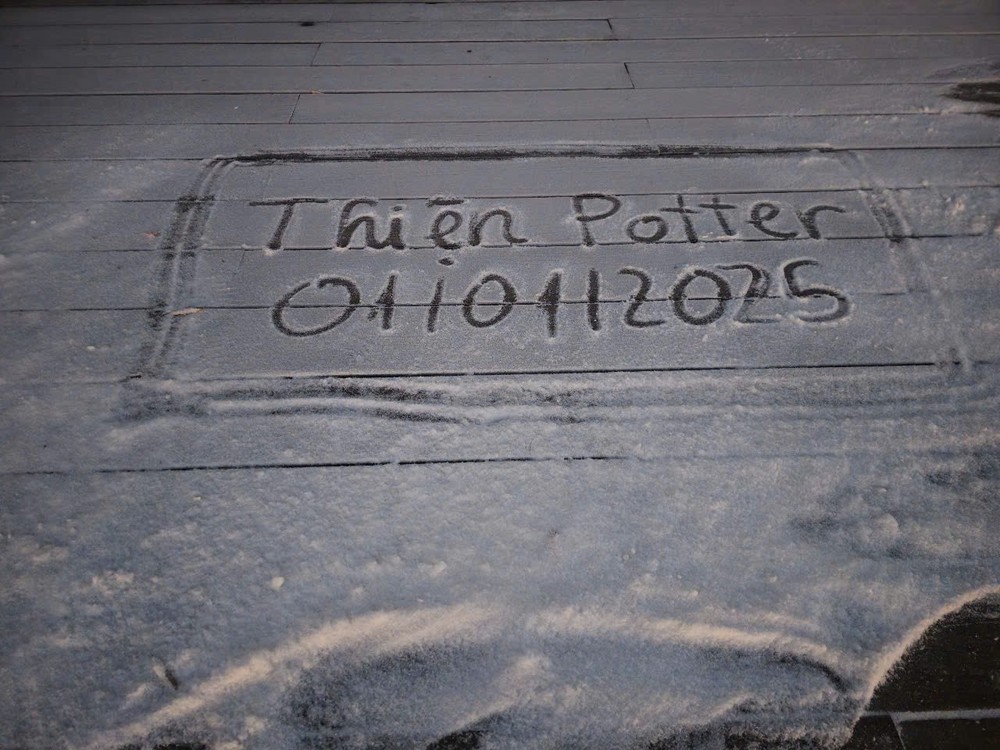
Frost reappeared on the summit of Fansipan Mountain in the Sa Pa tourist area of Lao Cai Province on the morning of January 1, 2025. This phenomenon was caused by a strong cold air mass, leading to a sharp temperature drop and enveloping the Northern region in severe cold.
According to the Management Board of Sun World Fansipan Legend, temperatures on December 31, 2024, had already fallen to minus 1 degree Celsius, causing water vapor to freeze into a thin layer of ice on the wooden platform at the Fansipan summit marker and nearby vegetation.
By January 1, frost intensified, particularly in sheltered areas, forming thick, white crystalline layers. As the sun rose, the frost gradually melted under the warmth of sunlight. However, temperatures on the night of January 1 and early January 2 are forecast to remain extremely low, making further frost likely.
Additionally, in the early days of the new year, frost and morning ice may also appear in regions such as Ha Giang, Cao Bang, and Lang Son, offering visitors a chance to experience the stunning beauty of this natural phenomenon.
The National Center for Hydro-Meteorological Forecasting released its weather forecast for January 2025 on the afternoon of January 1. According to the report, a low-pressure trough located between 6–9 degrees North latitude will connect with a low-pressure area in the Southern East Sea during the first three days of the month.
This system may lead to unusual weather conditions; however, it is expected to shift southward and gradually dissipate in the following days.
Cold air activity is forecast to intensify in January 2025 compared to December 2024, with frequent cold waves likely to cause prolonged severe cold in Northern provinces, particularly in mid-January. These harsh conditions could affect public health, agricultural production, and daily life, requiring close monitoring and prompt measures to mitigate impacts.
In the Central region, scattered showers and occasional thunderstorms are expected, with localized moderate to heavy rainfall possible, especially in the South-Central Coast.
Meanwhile, the Southern region may experience unseasonal rains, with a high likelihood of extreme weather phenomena such as whirlwinds, lightning, hail, and strong gusts during thunderstorms. These events could pose risks to property and public safety.

